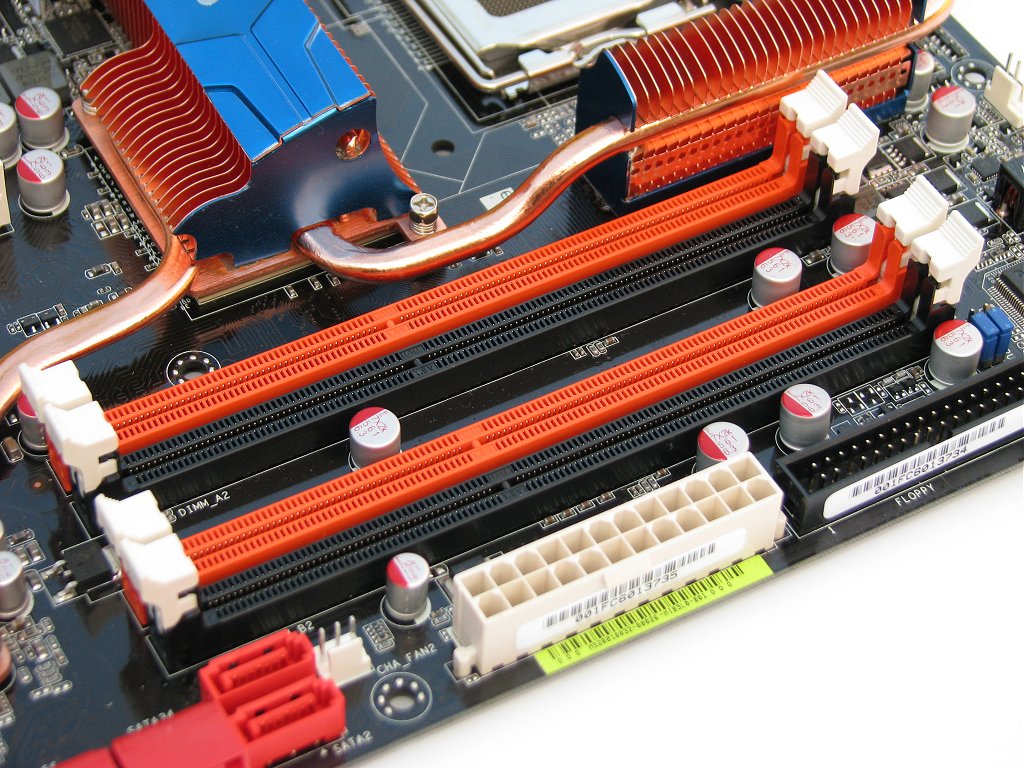Layout & Design
When it comes to board designs ASUS rarely disappoints and the P5E3 Premium (WiFi-AP @n) is a perfect example of this. Take all the shiny copper piping away and you still have a very impressive looking motherboard, and despite featuring everything bar the kitchen sink, ASUS has still managed to find an appropriate place for it all. Really the placement of every single component is excellent and we have just a single complaint about the board design.



Although there is little that can be done about it, the CPU socket is very crowded and we found installing a few water-blocks from Thermaltake and Swiftech to be quite a squeeze. The water-block from Thermaltake, the BigWater 760i kit, did fit but it also rubbed up against the top row of fins cooling a series of power chips. Perhaps the best fix is not to remove these heatsinks that cool the power phase but rather make them thinner.

This aside, the cooling setup featured on the ASUS P5E3 Premium (WiFi-AP @n) is excellent and with minimal air-flow it was able to keep both the north and south bridge chips very cool at all times. Almost all air-cooled heatsinks used on this LGA775 motherboard will provide the motherboard cooling with more than enough air-flow.


The I/O panel is just as crowded as the CPU socket, but this is a good thing as it adds to the board's connectivity options right out of the box. Featured on the I/O panel are six USB 2.0 ports, two eSATA ports, a single Firewire port, six audio jacks, a coaxial and S/PDIF port, along with two LAN ports, two Wireless antenna connectors and a single PS/2 connector for the keyboard. Legacy connections that are absent from the I/O panel include a parallel printer port, two serial ports and the PS/2 port for the mouse, none of which we miss in the slightest.

The board also offers a number of onboard expansion ports and slots. There are three PCI Express x16 ports in total. The two blue ones operate at full x16 speeds while the black slot is limited to PCIe x4. Then there are two more PCIe x1 slots and two traditional PCI slots. These slots are well positioned and the PCIe x16 slots are each separated by a PCIe x1 or PCI slot. This allows users to comfortably fit dual slot graphics cards on this board if need be.


The single IDE and SATA ports are very well placed and some thought has gone into the where they have been positioned, and how. Four of the six SATA ports are positioned behind the first PCIe x16 slot which is not so good for those that will be using a high-end graphics card, which are typically as long as or longer than the motherboard itself. However, ASUS being well aware of this fact, have gone with 90-degree mounted ports. The other two SATA ports which are not located behind a PCIe x16 slot are your traditional vertically orientated ports. The single IDE port which is connected to the JMicron JMB363 is also positioned on a 90-degree angle to avoid any conflicts.



Although the four DDR3 memory DIMM slots are positioned further down the board than we are used to see, ASUS has made sure that it is still possible to add and remove memory modules with a (fairly large) GeForce 8800 GTX installed into the first PCIe x16 slot, for example. Therefore there should be no major DIMM/PCIe x16 conflicts present on the P5E3 Premium. Overclockers will be happy to note that the battery is positioned at the bottom right hand corner of the motherboard where it can be very easily accessed.
